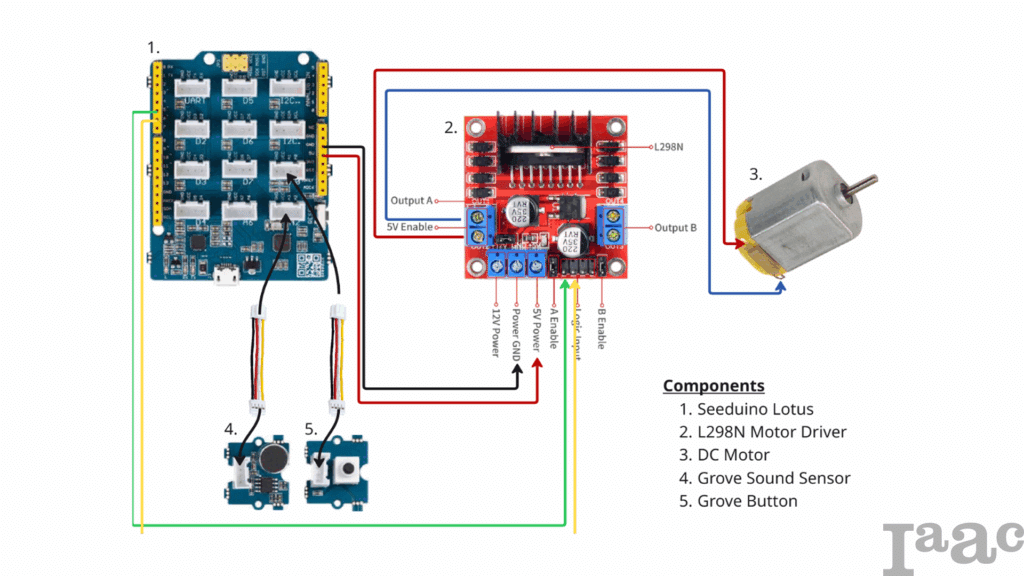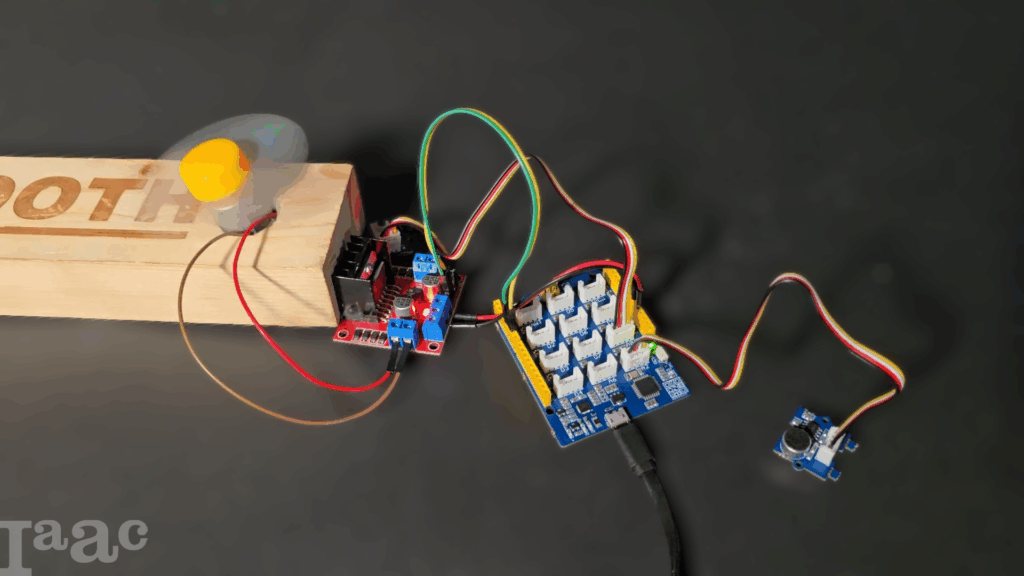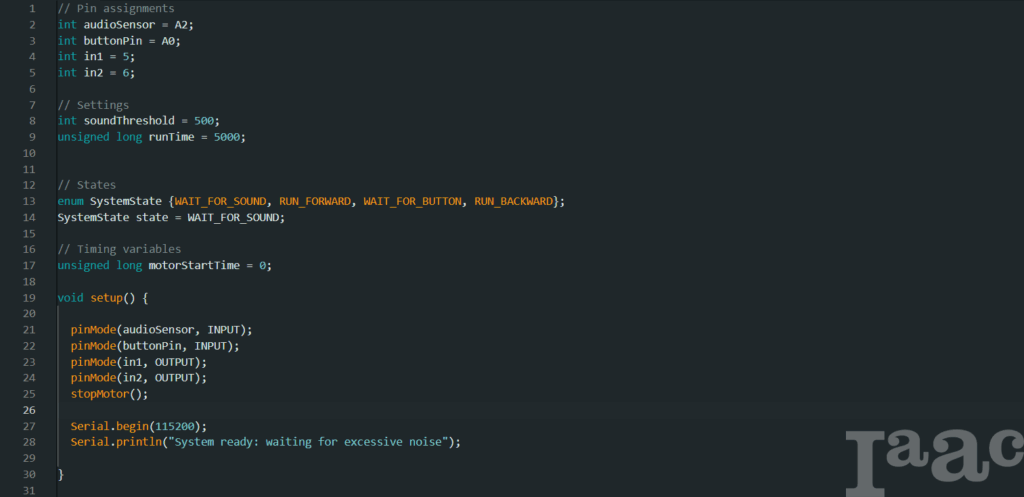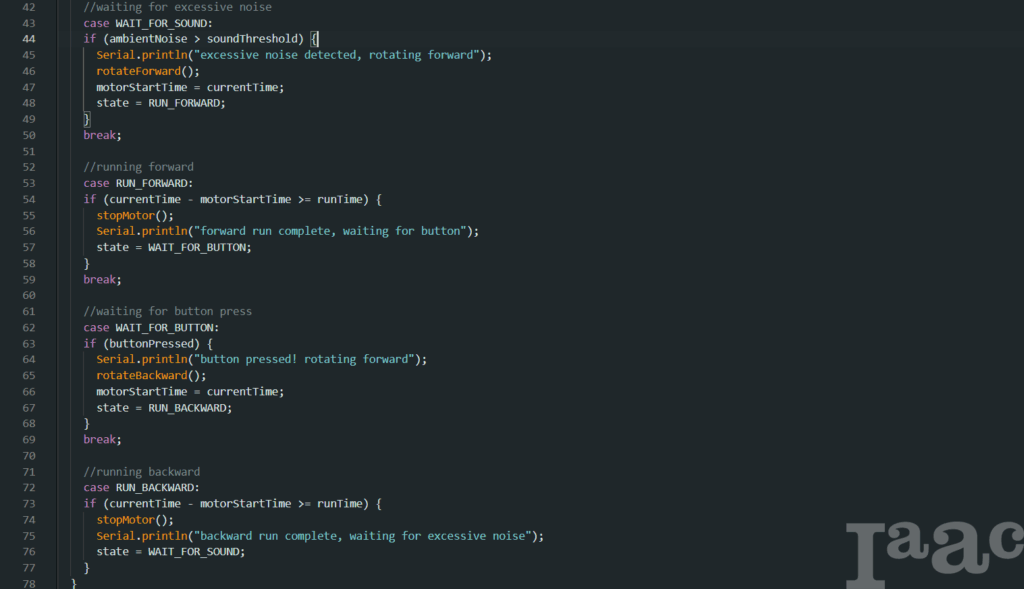In today’s collaborative work environments, open and shared workspaces have become the norm. Yet while they promote connection and creativity, they also introduce a significant challenge: noise.
This project seeks to address the problem of excessive noise in shared workspaces while maintaining flexibility and openness.
The Concept –
The project is inspired by the shared classroom space of the first floor of IAAC’s Atelier. During class, the device would sense ambient noise levels in adjacent workspaces and when sound levels exceed a predetermined maximum for a comfortable learning environment, it would automatically deploy a sound dampening curtain, shielding the classroom space from external noise stimulus.
The Mechanics –
A prototype of the design was created using components from the Grove Beginner Kit for Arduino along with a DC motor, L298N Motor Driver and additional jumper cables.


The Logic –
In order to prevent the motor from running continuously when continuously exposed to excessive noise levels, the code needed to be set up as systems states. It was divided into states for “sensing for excessive noise”, “running forward”, “waiting for button press”, and “running backward”. This enabled the system to deploy the curtain when noise was excessive and remain closed until a button was manually pressed to signal the curtain should be retracted. Helper functions were coded to define motor actions within given system states.




Next Steps –
- Additional Sensing Technology – The next iteration of the design should include an ultrasonic sensor to be able to detect when there is a person or object obstructing the path of the sound barrier and disable movement.
- Material Research / Mechanical Design – Research needs to be done on different material options and analyzed for factors such as cost, structural / mechanical requirements and simplicity of implementation.
- Scale Prototype – Once materials are selected and mechanism designed, the concept will be tested for viability at scale. Steps 2 and 3 will be repeated until the design satisfies all objectives.
- Implementation – The first full implementation of Studio Silence would be executed in the open studio space on the first floor of the IAAC Atelier.

